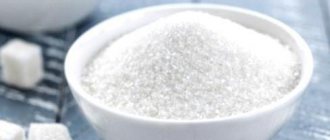There are many opinions regarding the length of each weight training session and the number of weekly workouts, but there is no universal solution among them. Both parameters depend on the conditions in which a person works and on the tasks assigned.
In addition, the drugs used also matter. In particular, anabolic steroids significantly accelerate protein synthesis and increase the body's recovery abilities, which allows you to train longer and more often. Although the effect is not as strong as is commonly believed in non-professional circles.
Thus, the process of hyperplasia of myofibrils (the main functional units of a muscle cell - the more there are, the stronger the cell) when using pharmacological agents is reduced from 10-15 days to 9-10 (source: Bagaudin Bekov “Strength training programs”, 2020, p. 152 ). That is, under ideal conditions (balanced nutrition, intelligently designed microcycle), the rate of true muscle growth may increase by up to 30%, or may not increase. All this is individual.
Naturally, there are still the effects of water retention, an increase in the amount of sarcoplasm in the muscles, active fat gain with disordered eating and other clearly noticeable and rapid reactions of the body, beloved by young “chemists,” but they have nothing to do with the topic of the article and the effective development of the body.
The result of the indiscriminate and unreasonable use of potent drugs, leading to the effects described above, resembles an “accordion” - it swelled up by 10-12 kg in a couple of months, and after stopping the drugs for a month, it all “wasted away”, leaving with a shattered hormonal system and in depressed psychological state.
Thus, I will compare options for the duration of training and their number within a weekly microcycle with specific training programs, goals and a person’s preparedness. This is not the ultimate truth, but many years of experience in studying the topic, working on yourself and with clients.
My opinion may differ from the generally accepted (or established), but it’s up to you to decide whether to try the recommendations below or stay with your opinion and experience. Just don’t forget that if you don’t have noticeable progress in a year or two or three, then it won’t appear out of nowhere. We need to change something, try new things.
How long does it take to pump up?
Most novice athletes cannot draw up a clear plan of action, because it is impossible to take into account all the nuances at the start, and some do not even think about planning their time and expenses.
To understand how long it takes to pump up, you need to at least approximately understand the stages of muscle growth, the time spent and everything else. When starting to plunge into the world of bodybuilding, the first question for a beginner is “How long will it take me to get pumped up?” which irritates experienced trainers, because this is a purely philosophical question that cannot be answered without complete detailed information about a specific person. After all, everyone differs in genetic potential, financial situation, motivation and level of knowledge, which is basically the decisive factor.
I think you have heard more than once, to the question “how long does it take to pump up in the gym?”, the answer is “in the first year of training in the gym you can gain 3-5 kg of mass.” It’s not clear who we’re talking about, what kind of training, with what intensity and frequency, what weight. One person will not gain even a kilogram in a year of training due to incorrect actions, a second person with good genetics will add 8 kg, and a third person with similar genetics, motivation and the right knowledge will add 15 kg.
As you understand, mass growth will be influenced by a large number of factors. For maximum muscle growth, you need to take them all into account when planning. Proper planning reduces the time and money spent for maximum results. Planning also includes achievable goals that you can achieve taking into account all of the above factors. But keep in mind that goals must be realistic; if you set a goal of 50 cm biceps, but in fact have 37, you will quickly be disappointed and give up this “unpromising” thing. Without quality nutrition, it’s difficult to gain even 1 cm. The goal should be 39 cm, after achieving it set 41 and so on.
Therefore, never set unrealistic goals! Set only achievable goals!
How long will it take to achieve results?
This question worries many gym goers. If the result cannot be achieved quickly, then in what adequate timeframe is it realistic? Let us immediately note that this question is ambiguous, since it is necessary to take into account many factors when answering it. The main factors in the speed of achieving a particular result in sports are:
- Age. A young athlete will achieve any result many times faster than an older or even middle-aged athlete. This is due to the fact that a young body, in principle, recovers faster from any load. It can withstand more intense workouts. He has more of the so-called “safety margin”. Young athletes are more flexible and easier to teach a particular motor skill.
- Training experience in other sports. Muscle mass and results in strength exercises will grow faster in those athletes who have had some experience and received a physical base in other sports, such as athletics, martial arts, and so on.
- Genetic predisposition to a particular sport. For example, there are people who easily build muscle mass and grow literally “by leaps and bounds.” There are people who meet the master of sports standard for bench press in the first year of training. If a person has a good genetic predisposition to strength sports, then he will progress in almost any training scheme.
And one more important point that all athletes know. Following a proper diet will help you build muscle faster. The body requires a sufficient amount of protein; if it is not supplied enough, it will begin to burn muscle tissue. This means that power loads will not give results.
Let's summarize briefly. Unfortunately, it is almost impossible to pump up muscles quickly and correctly. The secret is that adaptive processes proceed smoothly and step by step. The body will not do extra work. Therefore, the main task of an athlete when planning a training load is to choose a certain volume of training, correctly load the muscles in order to properly launch adaptive processes.
Finally, we wish our readers sporting success, health and longevity. Approach any training wisely, dose the load correctly, listen to your body, and then you will be able to overcome any obstacles and difficulties! Get into the habit of leading a healthy lifestyle and teach it to your children from a young age. Sport is a great joy and a great way to spend family leisure time. Yes, high performance sports are unthinkable without injuries, but we are mostly talking about ordinary athletes. But with them everything is much simpler, the main thing is not to overdo it, dose the load.
https://youtube.com/watch?v=lU8szb45sUw
How long does it take to get pumped up?
Now let's try to determine approximate time indicators for achieving the desired size. As an example, let’s take an average person (male, height 175, weight 70) with an average financial situation. Can afford to consume enough animal protein (meat, eggs, dairy products, fish), but there is not enough money for sports nutrition. Seriously motivated and ready to absorb knowledge. So how long does it take for him to get pumped up?
The progress of each athlete consists of four stages:
- The body's preparatory process for hypertrophy. (2-4 months);
- Hypertrophy period (2 years);
- Period of hyperplasia (1-2 years);
- System adaptation period.
Preparing the body
This stage of preparation for future mass growth is the shortest, but is the most important. Training with additional weights is perceived as severe stress for the body's systems. With regular stress, the body rebuilds its systems so that less energy is expended.
First of all, the energy supply system is changing. Muscle contraction requires large energy expenditures and therefore the body adapts, learns to store and release large quantities. Glycogen and ATP in muscle fibers increase, and the work of enzymes that affect energy metabolism accelerates.
Muscles also adapt and perform more optimally, expending less energy when performing new exercises. The muscles act more coordinated, which is how this effect is achieved. You can also feel a big increase in strength, for example, at first you benched 50 kg, and after a month it was 20-30% more. This happens not because your muscles have become larger, but because they work in concert. This means the muscles learn.
That is why the first months of training should be carried out with light weights with the most correct technique. The main task is to teach the muscles to contract correctly. A novice athlete must hone the technique of performing exercises, trying to achieve perfection. Having learned to feel and contract muscles correctly, progress will go quickly and in the right direction. All that remains is to increase the load and see, following your example, how long it takes to pump up in the gym or at home.
In addition, in the first months, the transport of nutrients (oxygen, protein, blood, energy, etc.) through the muscles improves due to the expansion of the capillary network. The bone-ligamentous apparatus thickens, which increases the strength of the muscles.
Muscles increase due to improved blood supply and accumulation of energy reserves. Please note that this is the growth of the “accompanying” systems, not the muscles, which increases their visual volume. As mentioned earlier, you will increase your strength, gain 2-4 kg of weight during the first stage, and then everything slows down. This is because there was no growth of muscle fibers, the efficiency of the work and accompanying systems simply improved. Muscle growth occurs in the next stage.
Hypertrophy period
This stage begins after the muscles and body systems are prepared for growth. Only by adjusting the energy supply will significant muscle hypertrophy occur. After all, if the body can still improve in the usual ways (increase in energy and accompanying systems), it will not resort to complex ones (increase in muscle cells).
The main task of this period is to inflate the existing muscle fibers as much as possible. The stage is not as long as many people think, the maximum cell size is reached after 2 years, that’s how many years it takes to pump up. In detail it looks like this: the first months of training will raise your body weight from 70 to 74 kg. In the first year he will gain 10-15 kg and 5-10 kg in the second. A person of average build, taking into account proper training, will gain 20 kg of weight.
Of course, the weight gain doesn’t end there, even though the cells have reached their maximum size and are no longer growing, there is a way out. It is necessary to reproduce new muscle cells, which will give more mass.
Period of muscle hyperplasia
The main goal is to achieve muscle cell division through high-intensity training with light weights. New fibers will provide additional volume. As a result, you can gain an additional 5-10 kg of muscle in 1-2 years.
Most athletes combine the last two periods into one long 3-4 year period in achieving maximum muscle gain. This mixture makes sense, training hypertrophy and hyperplasia in parallel, these two processes help each other, so progress will accelerate significantly. Based on this, you can figure out how long it will take to pump up.
It turns out that the maximum result can be achieved in 3-4 years, then everything stands still. But here too there is an opportunity to develop further. It is necessary to increase the body's capabilities so that it can serve more muscles.
System adaptation
The main task is to develop other body systems that limit muscle growth. It is necessary to strengthen the foundation, namely the circulatory system, nervous, cardiac, energy, tendon and others, they must be more powerful, which will allow you to build even more muscles. Having done everything necessary, you will be able to pump up truly huge muscles. Few people realize this and know how to use it, and those who know how stand on the Olympia stage.
How many times a week should you train
To determine how many times a week you need to train to get six-pack, you need to take a critical look at your initial data. If you have a toned tummy and an asthenic body type, it is enough to exercise twice a week. For such people, it is possible to tone their abdominal muscles, achieving relief, even in a month or two.
The optimal number of classes is 3-4 times every 7 days. And the result usually comes within 3-5 months of regular exercise. True, girls will have to study a little longer, since the female body is different from the male one. And most likely you will need at least 2-4 months of classes and plus a diet.
Training should take place in the following mode:
- Combine crunches with jogging. And after a five-minute break, do abdominal exercises.
- To speed up your metabolism, it is better to exercise in the morning.
- Eat at the same time to go to bed before 12 o'clock at night, sleep at least 8 hours, walk in the fresh air every day.
Beginners need to be careful and stop in time. Otherwise, the abdominal muscle will be injured, which will lead to general malaise. It is more important to monitor the number of repetitions than the intensity and pace. And repetitions must be increased gradually.
It is recommended to perform no more than 12-15 repetitions in 15 seconds, and then rest for half a minute. And do it again. It is important to change the types of exercises. And don't focus only on the press. All types of swings are reflected in the relief of the press.
If you are overweight, you should run for at least 30 minutes every day. And at least every other day, pump up your abs (start with 10-15 repetitions and go up to 60-100) and do cardio exercises. But not every day.
There is also this training option: three days of intensive training, three days of rest. Endurance exercises need to be varied. For example, on the first day, lift your torso, on the second day, lift your legs while hanging, and on the third day, do crunches.
Important! Everyone who wants to achieve six-pack abs goes through drying hell. Nobody likes it. But it is necessary. Otherwise, there will be no drawing of the muscles, no matter how much you train. When drying, you should not starve, but simply strictly count calories.
How long does it take to get pumped up?
Today we’ll talk about gaining muscle mass - this is the main goal of most beginners who come to the gym, and a worthy goal. What man doesn’t want to look pumped up, more ripped and stronger? However, achieving this goal is not an easy task. In addition, it is impossible to say unambiguously how long it will take a particular person to gain muscle mass.
The behavior of an animal organism, which includes humans, depends on many genetic, psychological and physical factors. We are all different people with our own unique traits, be it strengths or weaknesses. We have different diets, metabolisms, training and recovery regimes from each other. Therefore, it would be more correct to ask the question, exactly how long will it take me to pump up? We want to help our readers understand this by presenting interesting facts and useful recommendations.
More details
If you take a scientific approach to the issue of the speed of muscle mass gain, you can get rid of most illusions and avoid many problems associated with the development of physical fitness.
In the case of beginning bodybuilders, high expectations do not bode well, but are fraught with injury, overtraining and disappointment. There are plenty of videos and articles on the Internet in which newly minted iron sports gurus tell how they increased their muscles by 15 kilograms in 4 weeks. But the volume of fact in them is inversely proportional to the amount of water. In reality, it is impossible to achieve adequate results in such a period, no matter what genetics you have and no matter what sports pharmacology you use.
It’s good when a young athlete is aware of his own abilities, slowly but surely mastering exercise techniques and laying the foundation for future growth. It’s bad when he is led by the ubiquitous advertising, buying useless nutritional supplements, or forgets about a rational approach to training and recovery. Then, at best, he will develop an upset stomach and overwork, at worst, for the rest of his life he will put up with the consequences of injuries, diseases of the digestive and excretory systems of the body.
With girls it's even more difficult. After all, they dream of getting a firm butt, toned hips and a flat stomach, but they don’t want to look like professional bodybuilders, whom we dare not call the fair sex. The problem is that many women who go to the gym for the first time are subject to prejudice. Like, you'll become like a gorilla if you do deadlifts. Therefore, more and more novice fitnessists are resorting to the help of “miraculous” means for losing weight or expensive operations and are less and less following the recommendations of professionals.
And, of course, don’t forget about laziness. She also plays her important role.
As a result, we have former jocks and athletes with a passive-aggressive position, who, after spending a lot of time on outright nonsense, returned to the comfortable position of “lying on the couch.”
How long does it take to actually achieve visible results: a few days, a week, a month, 2 months
It’s unlikely that anyone can pump up abs in 30 days; you need at least 60-90 days. To achieve visible abs on your stomach, you will first have to completely get rid of fat deposits. This may take a month or two of regular training. This:
- Cardio exercise 2-3 times a week (jumping rope, running, squats, lunges, cycling, swimming);
- follow a diet in which more calories are consumed than consumed;
- speed up metabolism with frequent split meals and daily walks;
- drink more water – up to 2 liters per day.
Along with general weight loss, strength exercises are carried out, including abdominal exercises. The first to appear are 2 cubes, then 4, and only after a while 8 cubes appear on the lower abdomen. How long it takes to see results depends on conscientious exercise and adequate workload.
If there are no problems with belly fat, then the formation of a sculpted body will happen faster.
Important! The amount of protein in food should increase, since muscle tissue is built from them. If there is not enough protein, when losing weight, the body will consume muscle tissue, and fat tissue will remain in place and be the last to go.
Be sure to watch: Gallery image with caption: Making a slender waist and tightening your abs: exercises and tips Gallery image with caption: A set of exercises for the abs and legs: a set of workouts for muscles, buttocks, thighs Gallery image with caption: Details on how to pump correctly abs to remove belly fat Gallery image with caption: How to pump up your obliques: basic exercises
How much muscle mass can I gain?
Gaining muscle mass is not a priority research topic among domestic or foreign scientists. However, there are currently several scientifically based positions on the potential and speed of muscle growth.
In particular, according to the results of an experiment by Arthur Jones, it was found that a healthy man who does not use anabolic steroids or other doping agents, but systematically exercises, gets plenty of rest and eats right, can gain up to 8 kilograms of muscle mass in a 12-week cycle. In this case, we are talking about high-quality muscle growth (without water or fat). So the figure is impressive.
In turn, biologists claim that over a lifetime, muscles can be increased by 20-25 kilograms (men) and 10-15 kilograms (women). Again, we are talking about natural bodybuilding and lean mass.
How then do professional bodybuilders achieve results of 100-120 kilograms of their own weight (and more), representing in fact a mountain of muscles? At a minimum, they use sports pharmacology. With the help of the same steroids, you can get closer to the limits of the human body. But you should understand that anabolic steroids are not magic pills. Without proper training, nutrition and recovery, progress will not be possible.
There are other data as well. For example, there is allegedly confirmed information online that a man is able to gain up to 100-200 grams of muscle per week. True, there is one “but” here. All this applies only to average genetic endowment. That is, there are both positive and negative exceptions to the rules. On the one hand, we have genetic monsters, which are the majority of competing bodybuilders, on the other, genetic mediocrities who will never achieve similar heights.
In addition, the potential for gaining muscle mass is directly affected by a person’s body type: endomorph (large build), ectomorph (thin build) or mesomorph (intermediate build). Obviously, endomorphs and mesomorphs have a higher predisposition to muscle gain than ectomorphs. True, it is usually more difficult for them to lose weight or burn fat.
How long can I get pumped up?
So, we found out what the maximum muscle mass gain rates are for the average man. It remains to deal with the main question - at what speed, that is, how long does it take such a man to pump up?
It is believed that without outside intervention, an athlete can add from 100 to 200 grams of muscle per week (about 0.5-1.0 kilograms per month), and an athlete can add from 50 to 100 grams of muscle per week (about 0.2-0.5 kilograms per month). In other words, if a jock has a goal to increase his muscles by 10-15 kilograms, then he can get closer to this result in about 1 year of training.
Do such numbers occur in reality? Of course, but usually muscle gain occurs either faster or slower. There are many factors that can affect it, including the ratio of BJU and the balance of microelements in the diet. Also directly or indirectly affected: the level of stress, taking medications (medicines, not doping agents), even colds and illnesses.
Sometimes work or family stress is so strong that everything literally falls out of the trainer's hands. Someone suffers from vitamin deficiency, and someone suffers from sleep deficiency, without realizing it. The result is a slowdown in progress. Therefore, without in-depth investigation, it is extremely difficult to calculate the rate of muscle gain and assess a person’s actual potential.
Everyone has abs, but how long does it take for them to appear?
Every person has abdominal muscles on his stomach.
It is simply a group of muscles in the abdominal area that are needed to keep a person upright and to bend and turn the torso in different directions.
Speaking specifically about six pack abs, they refer to the largest muscle in the abdominal area: the rectus muscle.
It occupies the area from the lower ribs to the crests of the iliac bones and alternates in a checkerboard pattern with a unique group of tendons, which give the muscles their relief in the form of cubes.
There are even smaller muscles that are also associated with a sculpted, pumped up belly, these are the oblique and transverse muscles.
Why do you need to know this? It is important to understand that you have all these muscles, but they are hidden under a layer of fat.
Losing belly fat is something that people often forget about. It doesn't matter how well you exercise or how powerful your muscles are if your belly is covered in a layer of fat.
This fat is deposited between the skin and muscles, protecting them but also hiding them.
There is a method that will help you determine approximately how long it will take to pump up your abs. First you need to know your body fat percentage. It can be calculated here.
In order for abs to appear on the belly, the fat percentage should be 7-8% in men and 16-18% in women. If your current body fat level is, for example, 18%, you will need to lose 10% if you are a man. Let's say you burn 0.5% fat per week through cardio training, basic abdominal exercises and proper nutrition. In this case, it will take you about 20 weeks to pump up your abs.
This is just advice and not a scientifically proven method. It is necessary to take into account other factors that will either accelerate or delay the result.
Factors affecting the rate of muscle growth
Frankly speaking, it is not possible to consider them all. After all, as mentioned above, even a common cold can affect an athlete’s progress. Therefore, only the key, in our opinion, components of muscle growth will be discussed below in detail: training, nutrition, age, experience, genetic potential, muscle memory and, of course, sports pharmacology.
Genetics
The topic is already hackneyed, but still relevant. Some people are lucky with genetics and, being a mesomorph from birth, at a conscious age they look like a competitive bodybuilder, but others are not, when, no matter how much you train, and no matter how you eat, you will not get powerful muscles.
Unfortunately for many, genetic predisposition to certain sports, including bodybuilding, is a real fact. Hormonal balance, quality of bone structure, number of muscle fibers, predisposition to fat accumulation, metabolic rate - all play an important role, directly affecting the speed and potential of gaining muscle mass.
Age
The hormonal explosion characteristic of young boys and girls must be used to the maximum if you want to look athletic and have a strong body in the future. With age, the level and synthesis of anabolic hormones (testosterone is no exception) inexorably decreases. Therefore, the further you go, the more difficult it will be to pump up.
How long does it take to pump up?
Gaining muscle mass is the dream of gym beginners. Quickly increasing the required volume, becoming stronger, more defined and looking better is a worthy goal. But it is difficult to say the exact time of its achievement. Human bodies are subject to many genetic and physiological laws. We all lead different lifestyles, and have characteristics of diet, food absorption, training regimen and rest. But people keep asking how long it takes to actually get big, how much you can gain, and where the limit is for muscle growth. Let's try to understand this issue.
Answers to questions: more important than you think
If you know scientifically based answers to questions about the speed of muscle pumping, you can get rid of illusions and make fewer mistakes in the process of working on yourself. Inflated expectations in the gym are the cause of injury, disappointment, and premature transition to anabolic steroid use. We read articles that tell how this or that actor gained 12 kg of lean muscle in 3 months, and we think that at lower speeds we shouldn’t even hope for adequate results in the gym.
It’s good if a beginner simply continues to learn the technique of basic exercises and lament that, unfortunately, he is not Wolverine. What if he starts buying useless supplements for muscle growth, purchasing diets from “Instagram gurus,” and eating everything from gainers to grandma’s cottage cheese with jam. What will he get in the end? Stomach upset at best. Excess fat, and problems with the liver and kidneys, at worst. Useless supplements siphon off a lot of money, a person begins to think that the gym is for the rich, and, as a result, he lies down on his favorite sofa again. This does not improve health, and self-esteem collapses.
For girls it's even more difficult. They dream of having rounded buttocks, toned hips, and beautifully drawn lines of the back and shoulders, but they do not want to look like professional bodybuilding athletes, for the most part. Many truly believe that huge “male-type” muscles are built not from a combination of heavy training, anabolic steroids, and a certain diet, but simply from the very fact of doing squats, deadlifts, and bench presses. That’s why the fitness industry offers a new “muscle tightening” program every day. As a result, many hours that could be spent effectively in the gym are spent on yet another nonsense, which, at best, strengthens the cardiovascular system, and at worst, simply increases appetite without providing incentives for muscle growth.
Knowing the actual rates of muscle growth eliminates wasted time and money, and simplifies the task for the psyche.
How long does it take to pump up a man's abs? A little about anatomy
Please note that for a task such as getting six-pack abs, exercise alone may not be enough. Look at your anterior abdominal wall. There may be a certain amount of fat deposits here. If they are present, no matter how hard you try to practice, the cubes will not be visible. That is, you can pump them up, but a layer of fat will treacherously hide them. Even a couple of centimeters of fat will be enough for no one to suspect that you have cubes.
There is only one way out - drying. Carbohydrates should be minimized or consumed only after sports, so that they do not have time to be stored in fat and are used for muscle recovery. But there should be enough protein in the diet. They go only to the muscles, and the body spends a lot of energy on their absorption, which is what is needed for effective weight loss.
Many people are interested in the question of how many days it takes to pump up the abs to get six-packs. Of course, you won't be able to do this in a week. But here a lot depends on physiology. If you have little fat in general, then you may need a month or less of regular exercise. But it’s more difficult for overweight people. They may need several months or six months, because they need to get rid of fat and make their muscles more prominent. But if this is your goal, you will have to be patient. But then you will be able to delight others with your stunningly beautiful figure. In addition, keep in mind that in order for all the abs to be visible, you need to work out each group of abdominal muscles.
In addition, to understand how long it takes to pump up your abs to six-pack abs at home, you need to take a closer look at your abdominal muscles. To achieve this goal, you will need four main muscles: the transversus, the internal oblique, the external oblique, and the rectus. The first muscle is responsible for the plane of the abdomen. It is located under the two oblique muscles. Leg raises are useful for training it.
The internal oblique muscle is located under the external oblique muscle. On the stomach it forms a so-called belt. This muscle provides flexion and rotation of the torso. To strengthen it, leg lifts, bends in different directions, and torso rotations are useful.
The external oblique muscle controls bending, bending and turning. It is located diagonally relative to the rectus muscle. That is, it runs along the edge line. Twisting, rotation and various asymmetrical movements are useful for training it.
The rectus muscle is responsible for controlling the lower back and hip joint. To train this muscle, you need to lift your torso and legs.
Keep in mind that sit-ups primarily train the upper muscles, while leg raises train the lower muscles. To train the rectus muscle, it is recommended to lift both the torso and legs at the same time - it’s hard, but effective.
How much muscle mass can you really gain?
Gaining muscle mass is not a priority subject for research by medical scientists. Today there are only a few scientifically based positions on this topic. A fairly well-known experiment by Arthur Jones showed that a healthy man without the use of anabolic steroids and subject to adequate nutrition, recovery and heavy training in failure can gain no more than 8 kg of muscle in a training cycle of 12 weeks. We were talking about initially strong and athletic people who were not overweight.
Biologists say that in a lifetime you can gain:
- Approximately 22 kg if you are a man;
- About 12 kg if a woman.
Why do professional bodybuilders deny this? The answer is simple - anabolic steroids. They accelerate protein synthesis, allowing you to increase volume and weight beyond what nature intended for a particular person. But you need to understand that the use of such substances has side effects for both men and women, and is not justified for health and fitness purposes.
There are other data - in a week, with an ideally structured regime, a man can add about 100 g of muscle mass, a woman - about 50 g. Sometimes they say that the maximum gain for men over a 12-week training cycle is about 6 kg, for women - 2 -3 kg, which means total body weight, not just muscles.
Important: weight gain can be more significant, since with excess nutrition, not only muscle mass grows, but also a person’s fat layer.
Of course, there are exceptions to the rules. Average values are valid for the so-called average genetic endowment. There are people who can gain more and faster, and those who can gain less. Usually, insignificant gains are compensated by the fact that a person practically does not add fat. Therefore, ectomorphs can be lean and sculpted with less muscle, while endomorphs can spend significant effort on reducing body fat, but still look “damp.”
What do you need to know to pump up your abs at home?
The fact is that conclusions about the speed of appearance of a sculpted belly with cubes can be very different, depending on certain factors.
Degree of physical fitness
As a rule, only non-athletic people who are obsessed with their appearance before the beach season talk about pumping up the press. In fact, not everyone can achieve abs in a month. Only people with a developed muscle corset can get at least some results during these 4 weeks. In their case, all that remains is to burn the excess subcutaneous fat reserves to make the tummy more prominent.
Amount of body fat
The thickness of the fat layer is different for everyone. If your fat mass is more than 25% of your weight, this means that the question “how to quickly pump up your abs?” — it’s incorrect for you. Instead of paying attention only to the contraction of the rectus muscle, you need to switch to more global tasks. Even if you manage to strengthen and build muscle fibers with abdominal exercises, your abs will still not be visible. A comprehensive and reasonable approach is to follow the path of strength training, perform proper cardio training, and perfect your nutritional system. Gradually, fat will begin to burn and your figure will become more athletic. When the fat volume drops below 20%, you can move on to working only the abs. In this case, it is quite possible to achieve the desired cubes.
Stabilizing muscles
Each person has different strengths of the stabilizer muscles on the body. The thing is that if these zones are not fully developed, then you can get a pumped-up, but too voluminous belly.
Nutrition issue
In building beautiful abs and body in general, a nutrition plan is of great importance. The most important thing is to always eat a healthy diet without going to various harmful extremes. Don't overeat or starve yourself. Please note that it is not those who severely limit themselves in nutrients and eat sparingly who can boast of exemplary abs, but precisely those who have mastered the art of healthy nutrition. His secret for an athlete is that the diet should be rich in all the most important nutrients, and at the same time, at the right moments, create a competent calorie deficit to maintain a toned figure.
Do you need abs on your stomach?
You need to figure out your goals and understand what exactly you want to get out of it. Due to some lack of awareness, girls and guys can tell everyone that they want six-packs, but in reality they don’t need it. In most cases, it is enough to bring the stomach into a toned and elastic state. And for this you do not need such loads as bodybuilders (grueling exercises with weights). You may not want too much belly relief. And it will be enough for you to reduce the fat layer. To get a beautiful belly, you can do classic static plank-style exercises or, for example, hanging leg raises.
General rules for how to quickly pump up your abs
To get good results from training, you don’t need to listen to amateurs and exercise twice a day. Experts do not recommend daily training for beginners. If you exercise without weights, you will need 3 workouts per week. If you train with weights, then reduce the number of trips to the gym or exercise at home to 2 times a week. How to determine when it’s time to add weights - the signal for this is the free execution of 15-20 repetitions of abdominal exercises. You need to add weight in order for those same cubes to increase in size.
You also need to add cardio training to everything else. This could include jogging for 45 minutes every day. It is better to run in such a way that the indicator on the heart rate monitor is in the range of 140-160 beats per minute.
An individual diet will also help speed up the creation of sculpted abs. It should contain no fast carbohydrates, a predominance of proteins, complex carbohydrates and very little fat. With this approach and effort, you will be able to pump up your abs in a short time.
Press of men and women
The principles of training may be similar for different genders. Here are just the different goals of guys and girls. The guy's ultimate goal is to achieve really sculpted abs that really stand out. And it’s better for a girl not to strive for big cubes. It is enough to train until 2 vertical lines are visible and 1 horizontal line on the stomach is slightly visible. When a girl’s 2 upper cubes stand out strongly, and a few more below them, this means that she has overdone the stress on her abs.
The fair sex does not need to take dry male abs as a model; this is not for women. Having come to this, a girl can provoke a malfunction in the body’s fat balance. All this is fraught with reproductive dysfunction and abnormal metabolism. Probably, having 6 cubes on a girl is more unaesthetic than really beautiful.
How long does it take to actually get pumped up?
So, we found out the maximum rates of muscle mass gain. At what speed can you gain muscle in reality?
- Average for men: from 100 to 200 grams of muscle per week (this is about 0.5-1 kilogram per month);
- Average for men: from 50 to 100 grams of muscle per week (this is about 200-500 grams per month).










